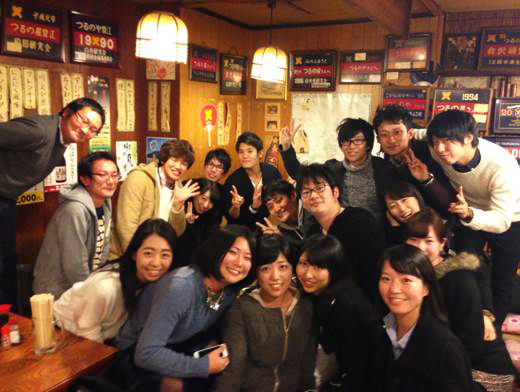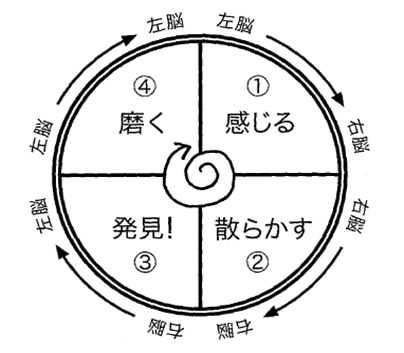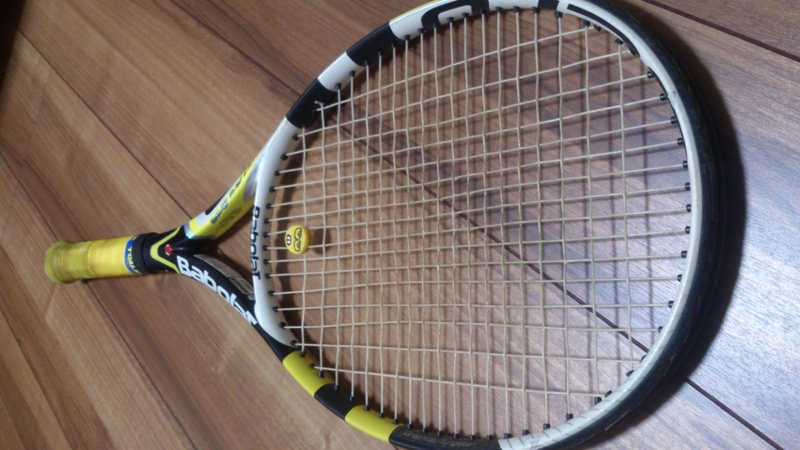Mita's "Tsurunoya" is an izakaya known to everyone connected with Keio University, reportedly frequented since his student days by a certain party secretary-general. By chance, I taught a weekly Friday lecture at the Media and Communication Research Institute this year, and this place was always chosen for the post-lecture gatherings. Just a few minutes' walk from the academic campus, descending into the basement reveals an unexpectedly spacious interior. Keio-colored pennants line the walls. The chair seats are occupied by our seniors in life. Students claim the tatami seating. We guzzled beer with edamame, fried squid tentacles, and stir-fried leeks and bean sprouts. We shared "love failure stories" and laughed heartily. We even indulged the students' cheeky insistence that "Hot sake is a must with hot pot!" and chugged away. Every dish was generously portioned with unpretentious flavors. With each bite and each glass emptied, we felt rejuvenated... It was like seeing a mirage. (Though the harsh reality hit the next morning.) Students, let's go again sometime!
 |
Question: Who was the student who cheekily said, "Hot sake is the way to go with hot pot, right"?
|
Now then. In the syllabus for my Advertising Special Topics I & II course, I wrote: "Working in the advertising industry (at Dentsu Inc.), I've come to realize that 'creativity is not a God-given talent.' While there are certainly differences in ability even at the university level, what matters more is putting in the right kind of effort." While I humbly accept the criticism that "Mr. Yamada, you sound rather arrogant," I wrote this precisely because I didn't want students to think "Creativity has nothing to do with me."
 The "Circular Thinking" methodology I've discussed over the past 12 installments is a concept (idea) creation process. It involves gathering materials in Feeling Mode, thoroughly exploring every possibility in Scatter Mode, discovering the concept (idea) that logically aligns with the goal/challenge in Discovery Mode, and then reconstructing the whole using professional techniques in Polishing Mode.
The "Circular Thinking" methodology I've discussed over the past 12 installments is a concept (idea) creation process. It involves gathering materials in Feeling Mode, thoroughly exploring every possibility in Scatter Mode, discovering the concept (idea) that logically aligns with the goal/challenge in Discovery Mode, and then reconstructing the whole using professional techniques in Polishing Mode.
And this process doesn't end after one cycle. When concrete solutions are sent out into the world in the polishing mode, you inevitably "feel" various experiences again during that process. These experiences automatically become material for the next concept (idea). And so, round and round and round, the eternal spiral begins.
For example, when thinking in circles about "the new relationship between automobiles and consumers." While the spiral of thought about "automobiles" naturally continues, simultaneously, the experiences gained through "automobiles" become immensely useful material for developing concepts (ideas) in new categories, be it "medicine," "beverages," or "public services."
One of the challenges we considered at Keio this term was "How can we get people to buy more neckties?" While most people were struggling hard with "How to sell neckties?", only one student, Mr. Sato, approached it from the concept (idea) of "the lifespan of a necktie," asking "How can we get people to discard their neckties?" His reasoning: "People don't buy more because they already own a decent number. If we make them aware of a tie's lifespan and prompt them to clean out their closets, opportunities will naturally arise." Indeed, this "making people consider lifespan" approach seems effective. It might even be applicable to other product categories. For instance, we hear things like "tennis racket strings last about three months" – that's probably an idea someone came up with to stimulate replacement demand for strings that have become durable and resistant to breaking through technological innovation.
 |
The net-like material strung on the racket is called the "strings."
|
Once this kind of spiraling thought process starts, you naturally begin to generate concepts (ideas) across various fields. You develop a sort of "idea-generating mindset." Of course, the quality of the concepts (ideas) you come up with will vary based on individual experience and skill. But there's no need to give up, thinking "I have no talent."
Twenty-eight 90-minute lectures over one year. I spent a total of 42 hours with the students. I can't wait to see them develop bold concepts (ideas) all over the world in a few years and create innovations that make me think, "Ah! I should have thought of that!" and feel a little jealous.
Next time, I plan to share the story of a tamagoyaki shop in Gunma Prefecture.
Enjoy!
 |
The correct answer is him. Mr. Sakamoto.
(By the way, the second person from the left is Mr. Iwata, the copywriter.)
|


 The "Circular Thinking" methodology I've discussed over the past 12 installments is a concept (idea) creation process. It involves gathering materials in Feeling Mode, thoroughly exploring every possibility in Scatter Mode, discovering the concept (idea) that logically aligns with the goal/challenge in Discovery Mode, and then reconstructing the whole using professional techniques in Polishing Mode.
The "Circular Thinking" methodology I've discussed over the past 12 installments is a concept (idea) creation process. It involves gathering materials in Feeling Mode, thoroughly exploring every possibility in Scatter Mode, discovering the concept (idea) that logically aligns with the goal/challenge in Discovery Mode, and then reconstructing the whole using professional techniques in Polishing Mode.


